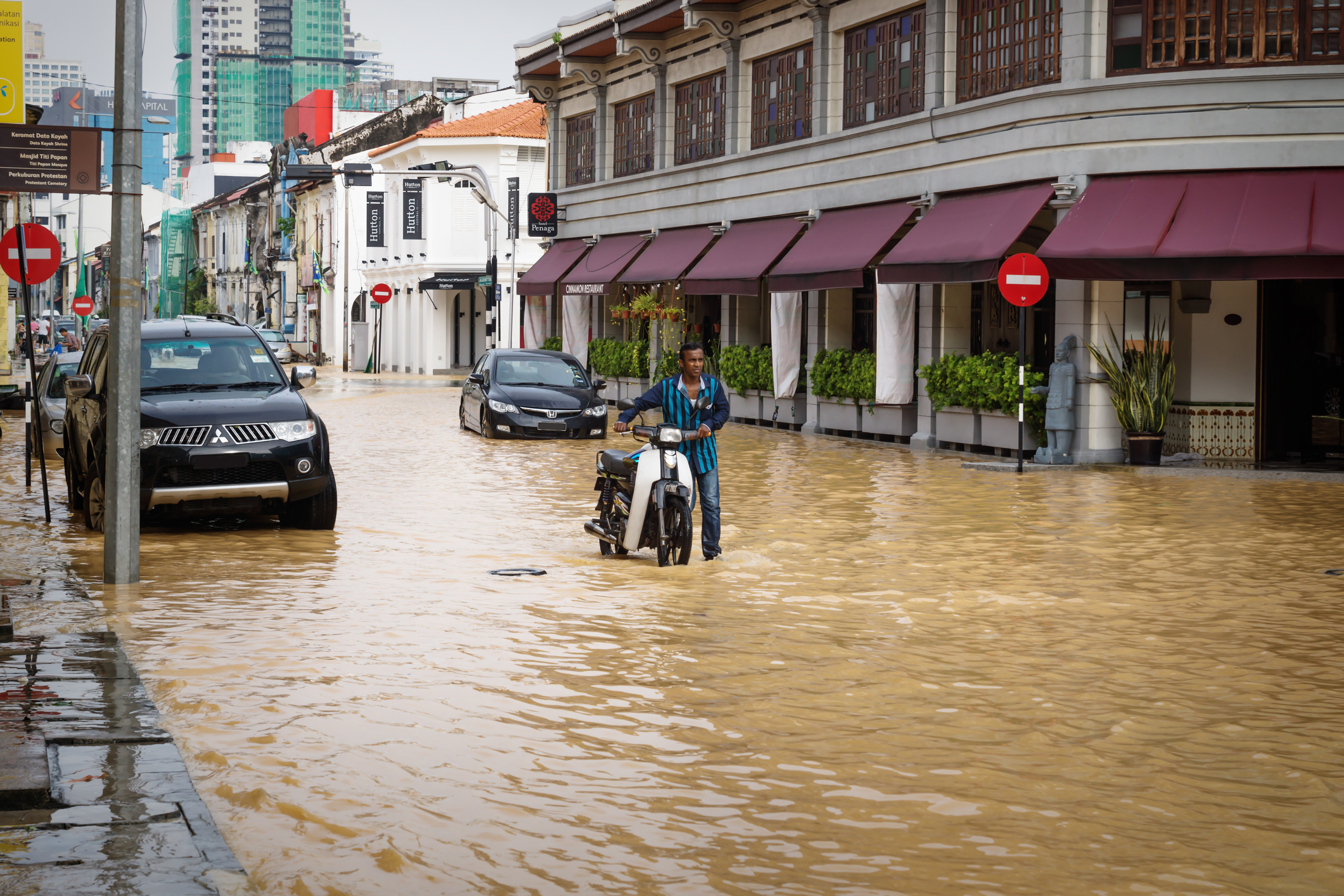5 Tips for Driving Through Floods in Malaysia
 Floods are not uncommon due to the nature of the climate we live in. Try as you may, but it is almost impossible to completely avoid them, especially on rural roads.
Floods are not uncommon due to the nature of the climate we live in. Try as you may, but it is almost impossible to completely avoid them, especially on rural roads.
They are especially prevalent during the biannual monsoon season, which typically spans from late May to September, and from October to March. And you can expect the effects to get worse as a result of global warming.
With that in mind, are there any things that drivers in Malaysia can do to drive through flooded areas in a safe and controlled manner? Can you do so without causing irreversible damage to your precious vehicle?
Do Assess the Water Level Before Crossing a Flooded Road

Ensure that the roads are not so waterlogged that you’d instantaneously drown your engine when you decided to drive through it. It is important to accurately ascertain the depth of the flood waters, especially if you happen to own vehicles with low ground clearance.
Drive Cautiously and at a Slow and Steady Pace
 You’d create a bow wave when you disturb the waters. The additional kinetic energy added to the floodwaters will result in these waves being formed. Drive slowly and at a pace that is lower than that of your bow wave, and do also yield to oncoming traffic where possible to minimise water damage!
You’d create a bow wave when you disturb the waters. The additional kinetic energy added to the floodwaters will result in these waves being formed. Drive slowly and at a pace that is lower than that of your bow wave, and do also yield to oncoming traffic where possible to minimise water damage!
Avoid Aquaplaning
This phenomenon happens when a layer of water fills up the grooves of your tyre, severely reducing the grip available. You’ll face difficulties in steering, braking or accelerating as a result. Always err on the side of caution and drive cautiously in floods. If a significant loss of traction is detected, gradually ease off the accelerator and hold your steering wheel straight. This prevents you from further upsetting the balance of your vehicle.
Find the ‘Dry Line’ and Keep the Revs High
 Where possible, try and follow the tyre tracks left by the cars in front. The surface water would likely have already been displaced, increasing the level of grip on offer. In deeper waters, stay in a lower gear and keep the revs high. This builds excess pressure in the exhaust and prevents water from making its way into the engine via the exhaust pipes!
Where possible, try and follow the tyre tracks left by the cars in front. The surface water would likely have already been displaced, increasing the level of grip on offer. In deeper waters, stay in a lower gear and keep the revs high. This builds excess pressure in the exhaust and prevents water from making its way into the engine via the exhaust pipes!
Check Your Brakes, Carpeting and Mats, and Engine After Driving Through a Flood
 Do ensure all of your mechanical components are working properly after driving through a flood. Pump your brake pedal to rid the pads and discs of excessive water. If your engine isn’t running smoothly afterwards, consider getting it towed to the nearest workshop. You may run the risk of hydrolocking your motor if you decide to continue driving it.
Do ensure all of your mechanical components are working properly after driving through a flood. Pump your brake pedal to rid the pads and discs of excessive water. If your engine isn’t running smoothly afterwards, consider getting it towed to the nearest workshop. You may run the risk of hydrolocking your motor if you decide to continue driving it.
This happens as water is not compressible. On the compression stroke, if there’s a significant accumulation of water in the combustion chamber, you’d run the risk of bending major engine components. Do also dry out your carpets by using dehumidifiers or leaving the car to thoroughly air dry. Otherwise, engage the services of a good detailer to restore your carpets too.
Drive Through Floods Safely
By following these tips, you can ensure that you drive through floods safely and avoid damage to your car!
I want to find the highest selling price for my car within 24 hours!
Read More: The New Car Smell: Pleasure or Poison?

